
© Elliott Franks. (Click image for larger version)
On Friday 28 April 2017, Sir Matthew Bourne was presented with the Critics’ Circle Award for Outstanding Services to the Arts by the Circle’s President, Anna Smith, and Graham Watts OBE, Chairman, Dance Section of Critics’ Circle & National Dance Awards, at a luncheon held at the National Liberal Club.
Matthew Bourne is only the fourth dance-related recipient of the Award, since it was inaugurated by the Critics Circle, in 1988; the others being Dame Ninette de Valois (1989), Sir Peter Wright (1995) and Dame Alicia Markova (2000). Other recent winners include Dame Maggie Smith (2015), Grayson Perry (2013) and Stephen Sondheim (2011).
What follows is Graham Watts‘ citation, made before the presentation – a major appreciation of a huge star of dance and theatre…
President, Members of the Critics’ Circle, our distinguished guest…..
It has been quite a wait. Sixteen years, in fact, since Dame Alicia Markova was the previous dance-related winner of the Circle’s Annual Award for Services to the Arts.
And… I’m personally delighted that – this year – the Dance Section has shared the responsibility of nominating Matthew with the Drama Section. It seems most appropriate that both dance and theatre should come together in this particular way.
Dance also waited a while for Matthew since he was a comparatively late arrival; not beginning his dance training until 22, an age when most dance students had already graduated.
Graham Watts OBE Introducing Sir Matthew Bourne at Critics’ Circle lunch 28th April 2017 from Elliott Franks on Vimeo.
He joined what is now the Trinity Laban Conservatoire of Music and Dance (then just the plain old Laban Centre, which, as Louise Levene recently reminded us, the late John Percival, once of The Times and later The Independent, privately referred to as the “Banal Centre”).
With its wonderful, Sterling Prize -winning Hertzog & de Meuron building at Deptford Creek, Laban is certainly far from banal, now, and as Levene wrote on in her Speccie column, just a fortnight ago, back in the early 1980s, the centre ‘taught Bourne how to structure his ideas and fed his passion for dance history’.
Matthew’s Laban training would have crossed a wide spectrum from ballet to the contemporary dance techniques of Martha Graham and others. His own movement language originally grew from this combination of styles and techniques but, over time, it has come to take on other forms of movement and expression in a melting pot of influences that has acquired its own uniqueness.
This year marks the thirtieth anniversary of companies led by Matthew Bourne. They have all – appropriately – been Adventures; beginning with Adventures in Motion Pictures and now through Matthew Bourne’s New Adventures. Just recently, 30 years of World Class Dance have been celebrated by the revival of three of his early successes in a five-star programme, entitled Matthew Bourne’s Early Adventures.

© Elliott Franks. (Click image for larger version)
His tried and tested genre – one that he owns exclusively – lies in deconstructing popular narratives (mostly the stories of ballet) and presenting them in a different time, place and/or context.
Even back in the late ‘80s, Matthew had the audacious inventiveness and wit to turn ballet on its head and give it a whirl.
He is – after all – the man who turned the famous Pas de Quatre, Jules Perrot’s love letter to the four great Romantic ballerinas of 1845, into Spitfire, just his second professional work; and essentially a 1950s underwear advertisement for four narcissistic guys.
In whatever guise, there can be not doubt that these last 30 years have been an extraordinary set of adventures.
Matthew’s passion was initially musical theatre and film as part of a multifaceted cultural enthusiasm that probably embraced every form of performance art. As a youngster, he would attend the theatre at least twice, each week, on a regular basis; and the old musical films held a special fascination.
The imagery absorbed in those formative years has remained ever-present in his work, from the early days of The Percys of Fitzovia (1992), derived from the literary genius of Noël Coward; and Deadly Serious (1992), which draws inspiration from the films of Hitchcock; and, of course, all the way through to his latest success, The Red Shoes (2016).
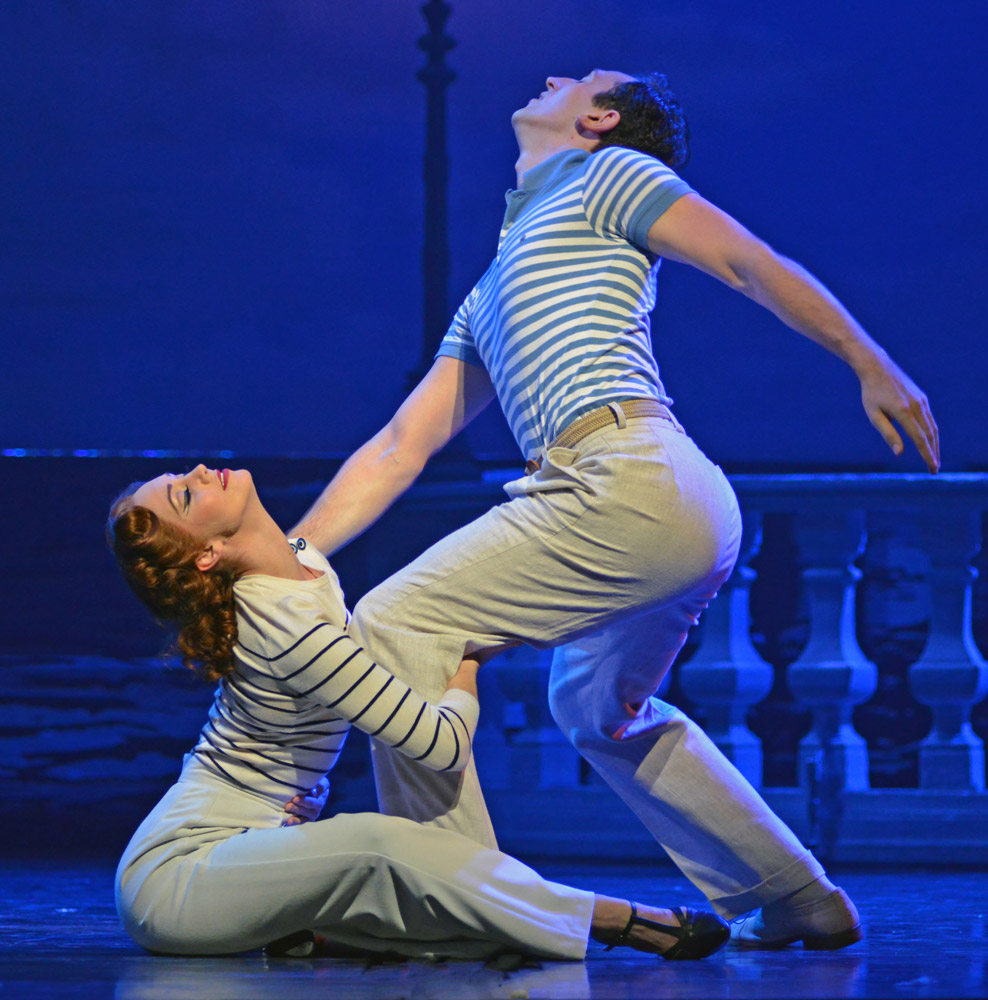
© Dave Morgan. (Click image for larger version)
This greatest of modern day showmen chose to launch the 30th anniversary of his company by fulfilling an ambition, harboured for more than twenty years, to take on this cinematic icon. Not with a view to repackaging it but as an homage, seeking to bring the essence of the Powell and Pressburger film to the stage.
Having started formal dance training late, Matthew quickly made up time by plunging straight into the task of creating work (although it would be wrong to overlook his parallel career as a dancer, which lasted some fourteen years).
From his first work, Overlap Lovers, in 1987, until now, Matthew has carved out a distinctive performance genre. Our much-loved and much-missed colleague, Giannandrea Poesio, who died, in February, described the “Bourne style” far better than I could attempt to do and I find it rather satisfying – in this year – to use Giannandrea’s words. This is what he wrote, back in 1999:
‘Considered in relation to the various trends that characterize British modern and post-modern dance, Matthew Bourne’s is a unique and isolated case. Bourne is not interested in abstract compositions or in experimenting with new means of expression. His principal aim is to create dances in which the theatrical element is particularly evident, for he believes strongly in what can be called pure ‘theatre magic’ – whether it be the refined scenario of a ballet classic or the spectacular panache of a Busby Berkeley musical. In every work…..Bourne’s personal adaptation of theatre magic is instantly recognisable.’
It’s salutary to reflect that Giannandrea wrote that passage when Matthew’s choreographic and directorial contribution was barely ten years’ old.
20 years’ further on and his ‘personal adaptation of theatre magic’ remains unique and, thinking especially of Edward Scissorhands, Play Without Words and the recent, enormous success of The Red Shoes – one might add his personal adaptation of film magic, as well.
There has been an unending torrent of brilliant, stylish, entertaining works over these past three decades; progressively developing an inimitable style through radical reimaginings of romantic and classical ballets.
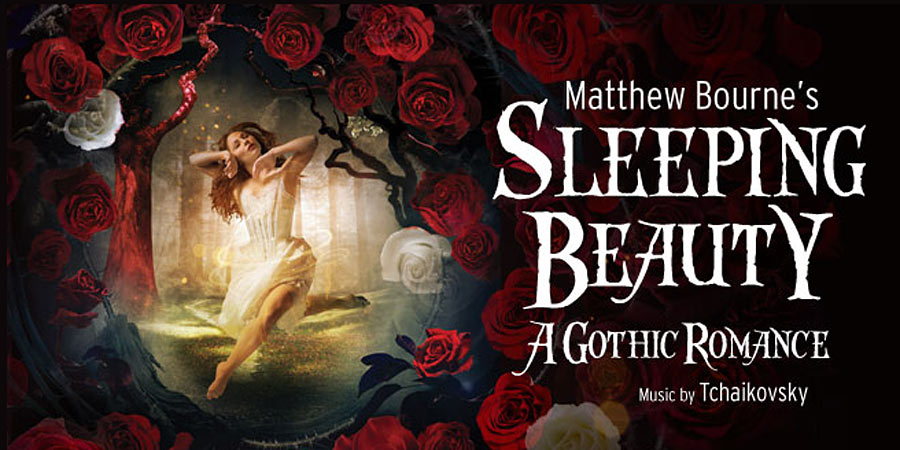
© Image by Hugo Glendinning. (Click image for larger version)
From Nutcracker! (1992) and Highland Fling (1994 – his ‘romantic wee ballet’ that reinterpreted La Sylphide) through the iconic success of his classic interpretation of Swan Lake (1995), with its corps de ballet of malevolent male swans; Cinderella (1997) and more recently, completing his renovation of the trilogy of Tchaikovsky/Petipa ballets with his vampiric Sleeping Beauty (2012).
There are, in all, eleven full-length productions in the New Adventures’ Bourne repertoire, including much-loved stories told for the first time in dance theatre: Edward Scissorhands (2005), Dorian Grey (2008) and The Red Shoes (2016), each of which is crafted from the same unique mould.
Even when taking a story and music that has been done to death, Matthew finds a unique angle, such as his interpretation of Carmen, morphed into The Car Man (2000), set during the early 1960s, in the fictitious one-street town of Harmony (pop: 375), somewhere in mid-West America.
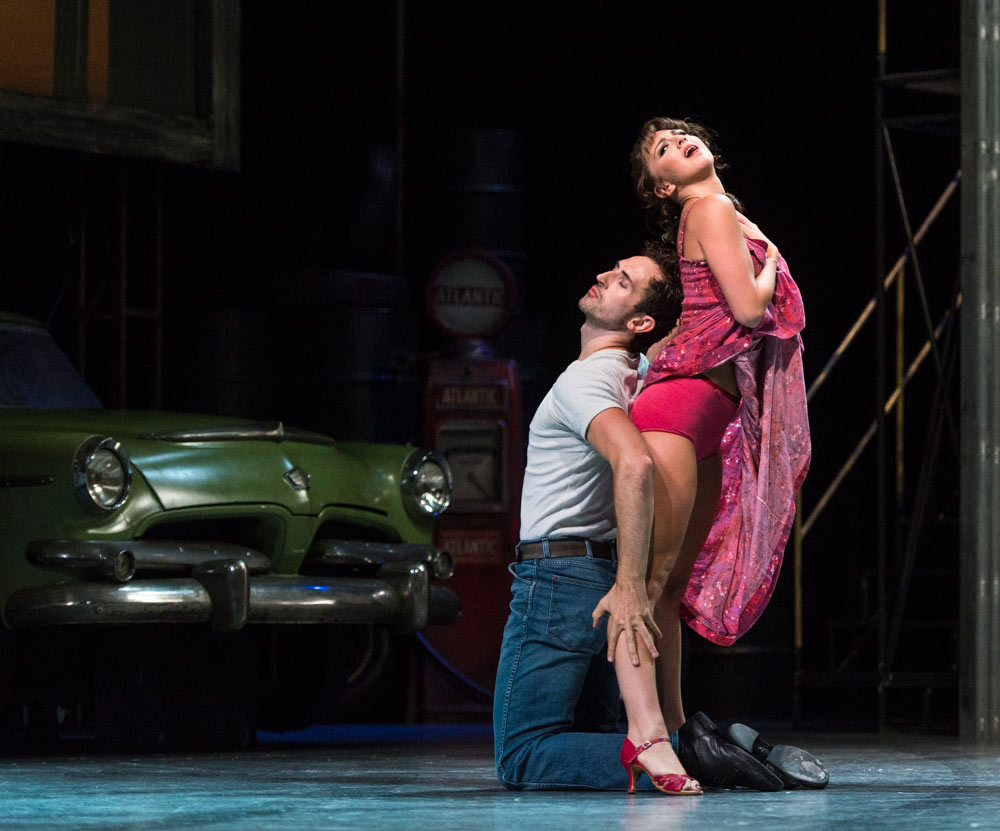
© Foteini Christofilopoulou. (Click image for larger version)
And then, there is his chic, ultra-stylish expose of the swinging sixties in Play Without Words, made for the National Theatre, back in 2002, and also deriving inspiration from several 60s films, not least – of course – Joseph Losey’s The Servant (1963).
Matthew’s work has often taken him into someone else’s adventure and high on his list of achievements are successful choreographies for West End Musicals – two productions of Oliver! (1994 and 2009); My Fair Lady (2002); and, of course, Mary Poppins (2004), co-directed with Richard Eyre and co-choreographed with Stephen Mear, which garnered an Olivier and two Tony nominations.
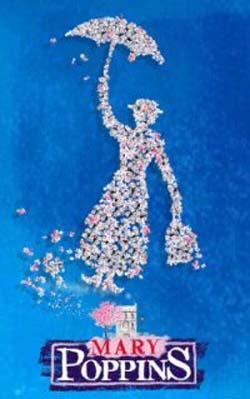 You can love his work for many reasons. There is always delightful whimsy. The Red Shoes parodies life backstage in the Ballet Lermontov, reflecting the paintings of Les Ballets Russes by Laura Knight, with great humour and affection. There is also a funny and well-observed cameo of an East End Music Hall with its down-at-heel showgirls and a pair of skinny, lewd vaudevillians brilliantly parodying Wilson and Keppel’s faux-Egyptian sand dance.
You can love his work for many reasons. There is always delightful whimsy. The Red Shoes parodies life backstage in the Ballet Lermontov, reflecting the paintings of Les Ballets Russes by Laura Knight, with great humour and affection. There is also a funny and well-observed cameo of an East End Music Hall with its down-at-heel showgirls and a pair of skinny, lewd vaudevillians brilliantly parodying Wilson and Keppel’s faux-Egyptian sand dance.
Giannandrea’s writing also reminded me of another favourite moment, which comes in the skating tableau at the end of Nutcracker’s first act. The women dancers stand on one leg, holding the hem of their skirts out wide, as if blown in the winter wind. It is the simplest, yet most effective, device.
Matthew is a director and a leader, as much as he is a choreographer, and his ability to craft a production goes very much further than making steps.
Leadership skills must inevitably include the capacity to enthuse the most talented people to work with you. And Matthew has always been most capably supported by a regular family of collaborators, not least in the ever-distinctive set and costume designs of Lez Brotherston; the lighting of Paule Constable; the music of Terry Davies; and the musical direction of Brett Morris.

© Elliott Franks. (Click image for larger version)
Matthew even took a break from choreography to enable one of many loyal, long-term dancers, Scott Ambler, to co-devise, co-direct and choreograph Lord of the Flies –a dance theatre adaptation of Golding’s novel, which – in my view – was under-rated by the critics, but which had the added success of bringing hundreds of young men into dance, for the first time.
This objective of inspiring young people – and young men, in particular – is the top priority in the core values of Re:Bourne, the charitable arm of New Adventures, with which Matthew and his team are investing in the future of dance by supporting and nurturing the next generation of dancers, choreographers and audiences, through programmes such as Bourne To Dance and the New Adventures Choreographer Award (or NACA as it has become affectionately known).
To be “knackered” in dance now means something entirely different!
This £40,000 biennial award was set up initially, by colleagues and friends, to celebrate Matt’s 50th birthday. The five NACA winners, to date, have each used the award as a springboard to accelerate successful careers. One of the 2013 winners, Caroline Finn – for example – is now the artistic director of National Dance Company Wales.
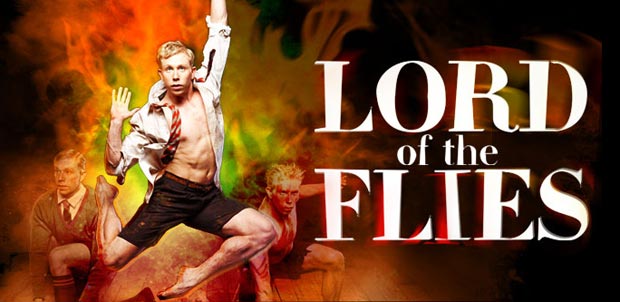
© New Adventures.
If there is anything that one might take issue with Matthew, it could just be his choice of role models. In a 2014 BBC interview, describing his process for giving guidance to the dancers in Lord of the Flies, Matthew explained that “he turns up towards the end of rehearsals….to give some last minute instruction….a bit like Simon Cowell.” I tend to think, not.
Dance is not the easiest profession in which to find employment but Matthew’s work has seen fifteen hundred (1,500) dancers, musicians and theatre professionals employed over the last decade alone. As we have just seen with the re-run of those Early Adventures, every one of his shows is revivable. And every production comes back, if anything, even fresher than before.
Like the long and close relationships enjoyed with his creative team, it seems that once a Bourne dancer, always a Bourne dancer. Etta Murfitt joined his company, in 1991, and is now associate artistic director. Others, such as Kerry Biggin, Chris Marney, Dominic North, Michaela Meazza and Alan Vincent have similar long tracks.
And, of course, we shouldn’t forget Jonathan Ollivier, so awfully killed on his way to perform the role of Luca on the final night of The Car Man revival, at Sadler’s Wells, in August 2015.
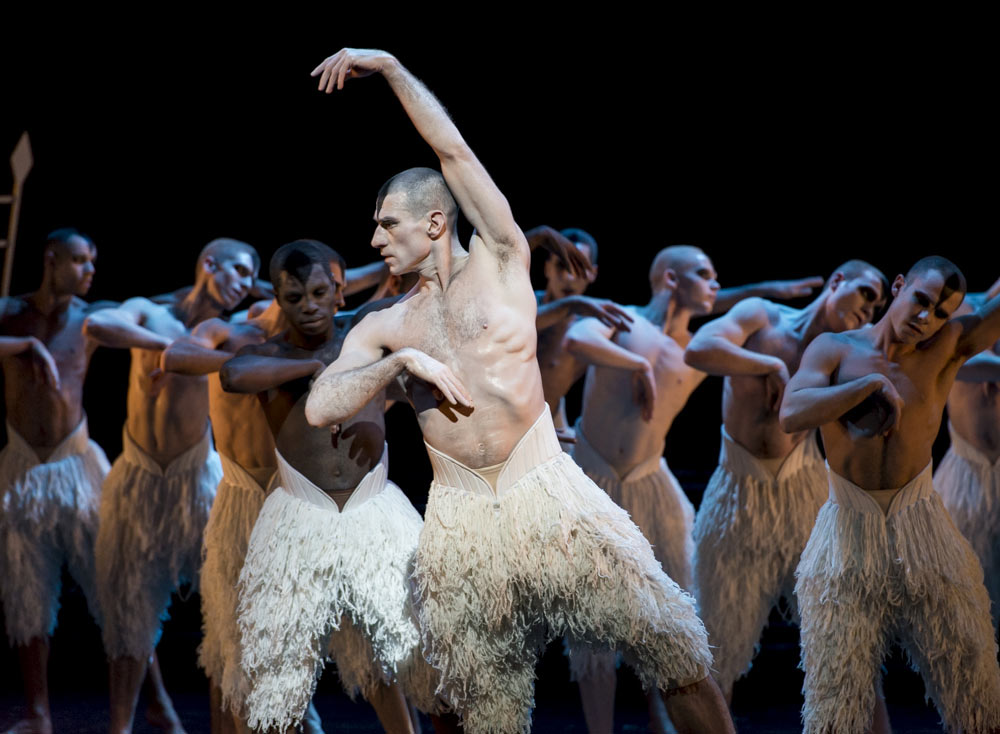
© Foteini Christofilopoulou. (Click image for larger version)
A few months’ later New Adventures and Re: Bourne staged Mr Wonderful, a spectacular, emotional evening of dance at Sadler’s Wells to celebrate Johnny’s life and work; and – even more importantly – to kick-start a charitable trust for his two (very) young sons.
No matter who you speak to, there appears to be an unbreakable bond between Matthew and his dancers; and it is clearly born of genuine two-way affection and loyalty.
There is no time to do justice to Matthew’s achievements in terms of awards. They are legion. They are international. 10 Olivier Award nominations – two more Oliviers won, just a couple of weeks ago. There have been The Stage Award for Outstanding Contribution to Theatre; The Gene Kelly Legacy Award ; and The Queen Elizabeth II Coronation Award in recognition of his outstanding services to ballet. Another award from Her Majesty came as an OBE, in 2001, promoted to a knighthood, in the New Year’s Honours of 2016.
So many personal awards but I don’t doubt that it is awards to the company, as a whole, that he prizes above all else. Never have I seen a happier man than when New Adventures won the Stef Stefanou Outstanding Company Award at last year’s National Dance Awards.
We may have had to wait a little too long for Matthew to receive this particular award but there is a pleasing symmetry to the timing.
In 2013, he won the highest award that the Circle’s Dance Section can bestow, when voted by all the dance critics to receive the De Valois Award for Outstanding Achievement. Dame Ninette De Valois, by the way, was the second recipient of the Critics’ Circle Award for Services to the Arts – following Sir Peter Hall – back in 1989; the year in which Matthew made The Infernal Gallop.
Sir Matthew Bourne receives The Critics' Circle Award 2016 For Distinguished Services to the Arts at a ceremony today in London from Elliott Franks on Vimeo.
The De Valois Award came just after the celebration of his 25 years as a maker of dance theatre; and it seems appropriate that this award should help to celebrate the 30th anniversary.
Sir Matthew Bourne has kept audiences all over the world consistently entertained with work that is rich in imagery and spectacle and in which there is never, ever, a dull moment.
He is a choreographer, a director, a leader, a story-teller, a magician, and, like his early inspiration, Fred Astaire, he is the consummate entertainer.
I would like to call upon the Circle’s President, Anna Smith, to present the award on our collective behalf.













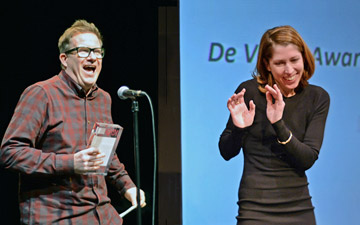


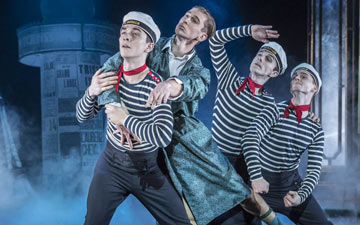
You must be logged in to post a comment.